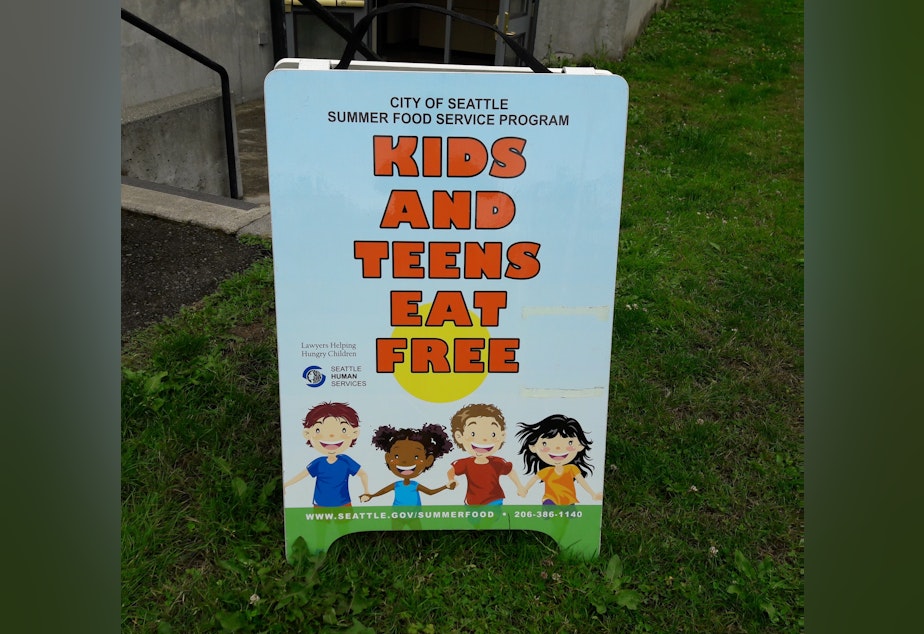Washington lags the country in feeding kids over the summer

Most libraries and parks offer summer activities for children. And for some kids, these places are also a main source of lunch when school’s out.
But not all kids who need the lunches are getting them.
For Sheila Trujillo, 10, summer means no homework. She and her siblings were at the Seattle Public Library’s Columbia branch.
“We go outside, we play and sometimes we come here for the reading program,” she said.
Besides the reading program and playing games, they’ve come for the lunch.
Olivia Halas, a volunteer, showed them the day's options: cereal and applesauce or a pizza wrap, a tortilla with a red sauce and cheese.
The library is one of hundreds of sites in the state offering meals for kids 18 or younger. There’s no registration required.
Sponsored
Last year, one in 10 low income children in Washington received summer lunches, compared to one in seven nationally. That’s according to a report by the Food Research and Action Center, a national anti-hunger nonprofit.
“The summer nutrition programs were designed to replace school breakfast and lunch because when summer starts, a lot of kids lose access to those meals,” said Crystal FitzSimons, who monitors states’ participation in summer nutrition programs.
“But the summer nutrition programs only serve a fraction of the low-income kids who participate in school lunch during the school year.”
The report ranks Washington 35th in the country. Claire Lane, director of the Anti-Hunger and Nutrition Coalition, a statewide nonprofit, isn’t surprised.
“Washington hasn’t changed a lot in our rankings for several years,” she said.
Sponsored
Lane said the state has historically relied on schools to serve lunches, even during the summer. Then the 2008 recession happened.
“As our state schools have really struggled with their budgets, schools have done things like cut back their summer schools to only two weeks during the summer," she said.
That means kids who rely on schools for lunch only get them for those two weeks in the summer. Lane says parks departments that also offered summer meal programs were hit hard too.
Besides funding, there are other challenges. In rural areas, getting to a site where meals are served is a barrier, especially in the summer.
“To get to that same school that may be offering a summer meal, nobody’s giving you that 30 minute bus ride to get to school for the half hour, 45 minute lunch program,” Lane said.
Sponsored
Lane said there are three key ingredients for a successful summer meal site. It requires an agency that can organize the program and deal with federal paperwork. It also requires people who can prepare meals that appeal to kids.
The third part, Lane said, is the real magic. “You need to have that site where kids and families want to be, where kids want to go each day and families feel safe and comfortable sending their kids there.”
In Columbia City, Trujillo explained why she likes coming here while stirring a milky colored mixture to make slime.
"You get to meet new people,” she said. “You get to do lots of stuff, like new stuff that you haven’t tried yet.”
That’s the idea behind the summer meal programs — keep kids engaged and fed so come fall they’ll be ready for the coming school year.




